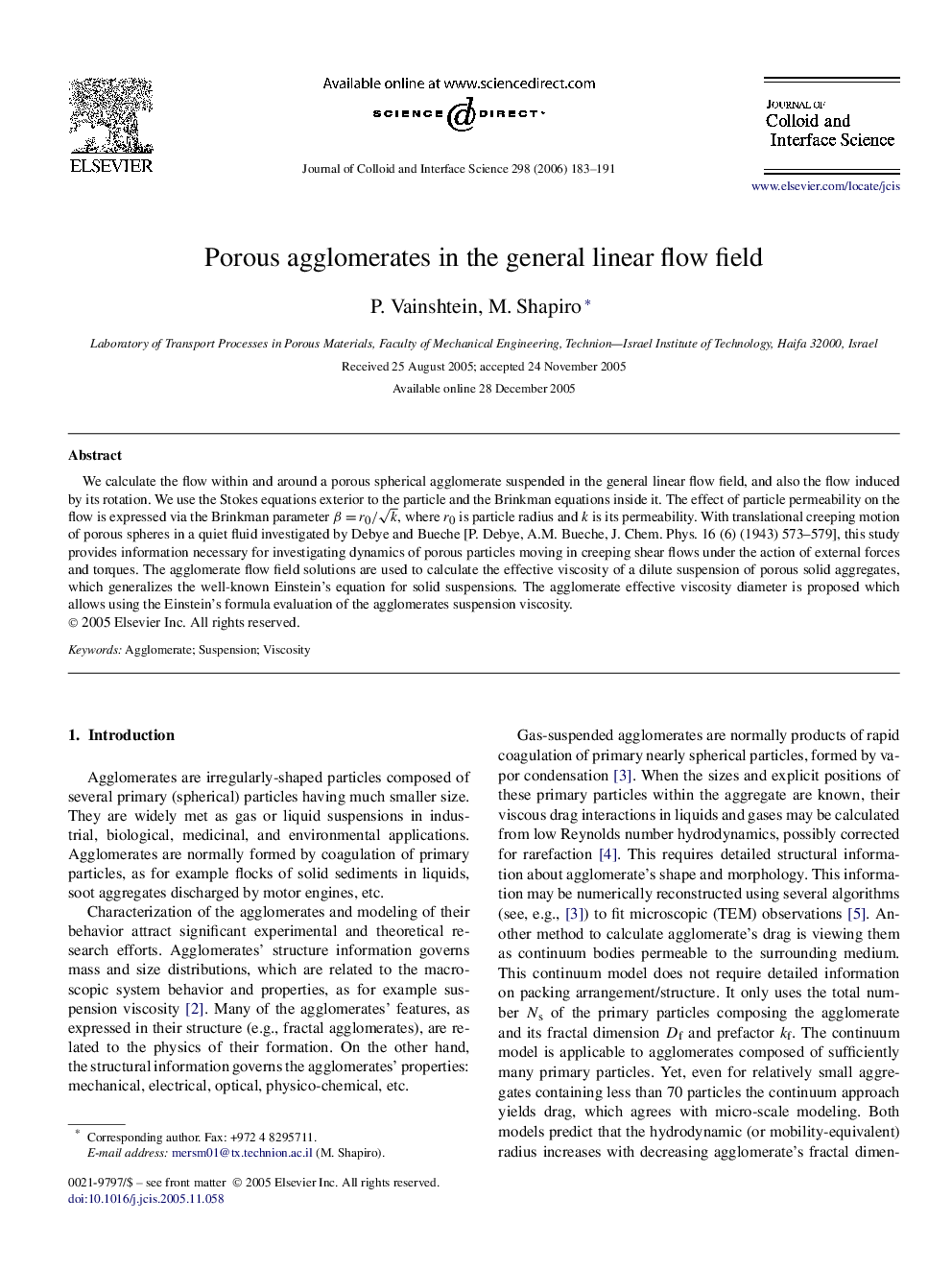| Article ID | Journal | Published Year | Pages | File Type |
|---|---|---|---|---|
| 613623 | Journal of Colloid and Interface Science | 2006 | 9 Pages |
We calculate the flow within and around a porous spherical agglomerate suspended in the general linear flow field, and also the flow induced by its rotation. We use the Stokes equations exterior to the particle and the Brinkman equations inside it. The effect of particle permeability on the flow is expressed via the Brinkman parameter β=r0/k, where r0r0 is particle radius and k is its permeability. With translational creeping motion of porous spheres in a quiet fluid investigated by Debye and Bueche [P. Debye, A.M. Bueche, J. Chem. Phys. 16 (6) (1943) 573–579], this study provides information necessary for investigating dynamics of porous particles moving in creeping shear flows under the action of external forces and torques. The agglomerate flow field solutions are used to calculate the effective viscosity of a dilute suspension of porous solid aggregates, which generalizes the well-known Einstein's equation for solid suspensions. The agglomerate effective viscosity diameter is proposed which allows using the Einstein's formula evaluation of the agglomerates suspension viscosity.
Graphical abstractThe solutions for the flow fields within and around a porous agglomerate are used to calculate the moment on the rotating particle and the effective viscosity of a dilute suspension of porous solid aggregates. The latter generalizes the well-known Einstein's equation for solid suspensions.Figure optionsDownload full-size imageDownload high-quality image (93 K)Download as PowerPoint slide
